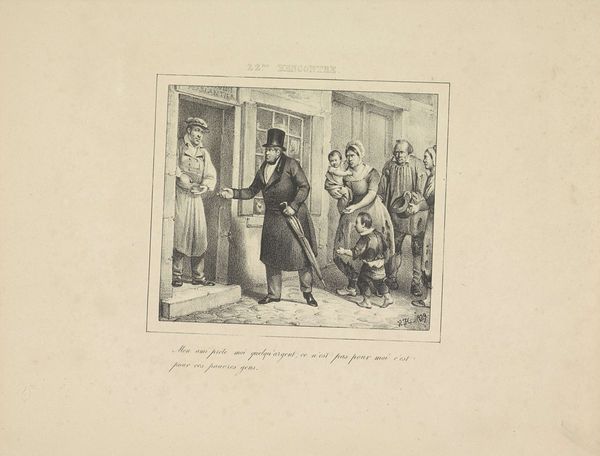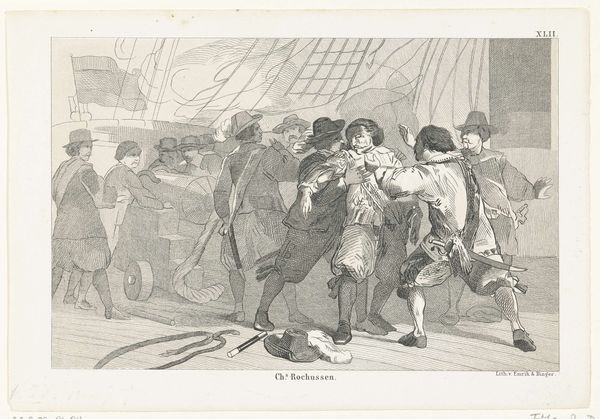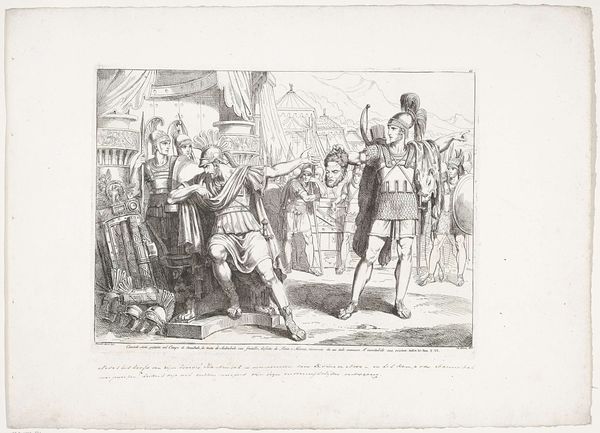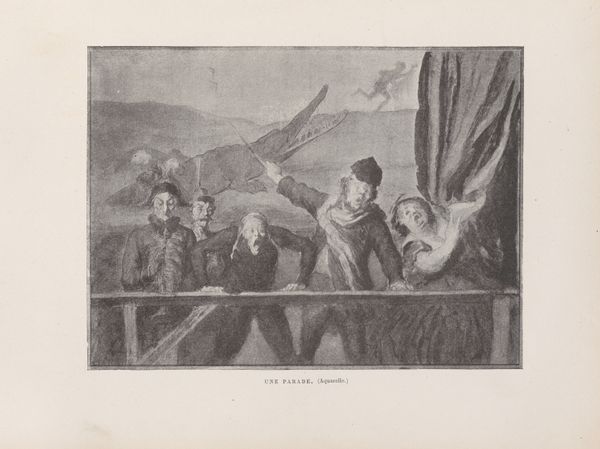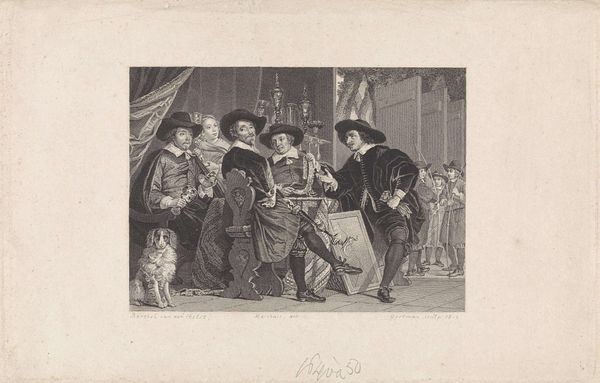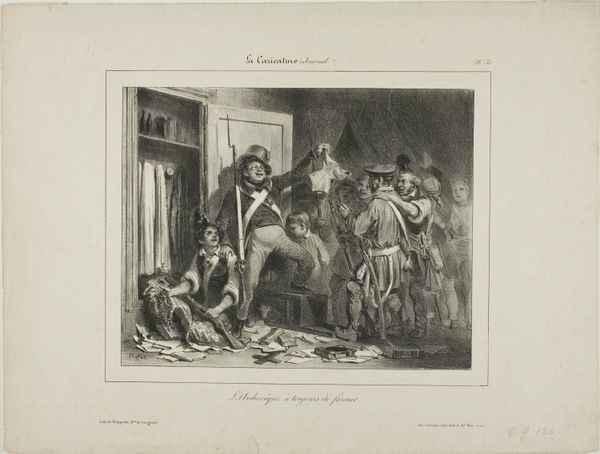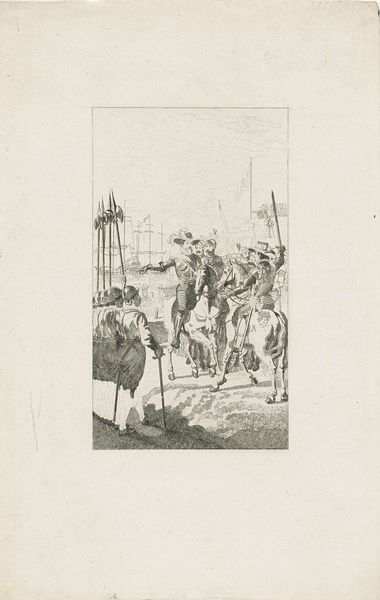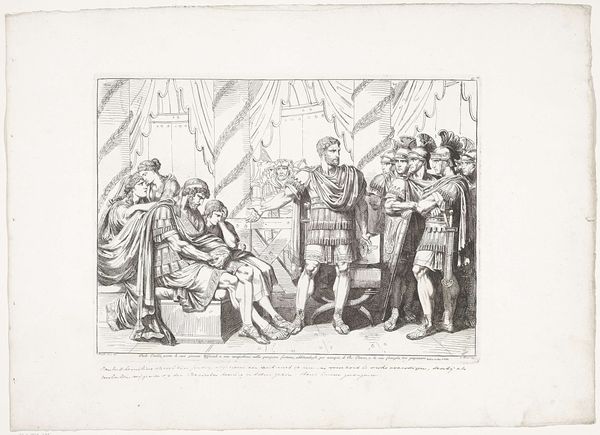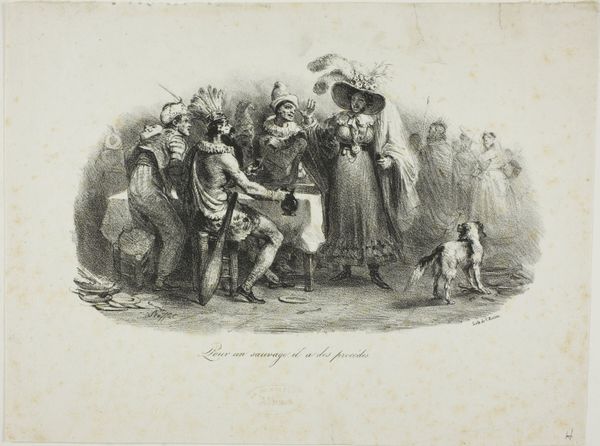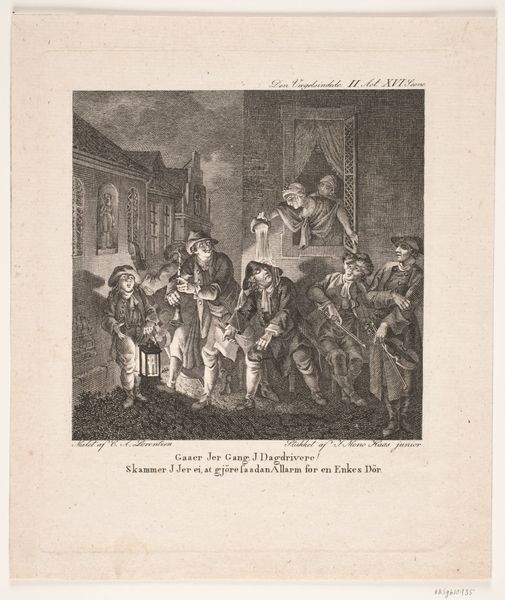
Dimensions: height 164 mm, width 242 mm
Copyright: Rijks Museum: Open Domain
Editor: This is "Cornelis Tromp en Michiel de Ruyter, 1664," an engraving made sometime between 1853 and 1861 by an anonymous artist. It's interesting to see this scene of camaraderie, but I wonder, why depict this historical meeting in this medium so long after the fact? What can we learn about this choice? Curator: That's a great question. By the mid-19th century, historical engravings like this served a crucial role in shaping national identity. This print, part of a broader project likely, was designed to educate and inspire pride in Dutch history, particularly figures like Tromp and de Ruyter who represented naval power and national strength. What details stand out to you in terms of how the figures are portrayed? Editor: Well, Tromp is raising his hat in a celebratory gesture, and they both seem very self-assured, like the heroes they were. Curator: Precisely. Notice how the artist emphasizes their confident poses and the inclusion of celebratory figures around them, turning it into a history painting? It evokes the romanticised view of the Dutch Golden Age and their accomplishments during their naval wars. This isn't necessarily about accurate historical record, but about promoting a particular vision of Dutch history, accessible through mass-produced images like prints. How do you think images like this may have impacted the broader culture? Editor: I suppose it reinforced a sense of national pride, almost like visual propaganda spreading the heroic stories. Curator: Exactly. And consider where this print was likely displayed – perhaps in homes or schools. These environments became stages for the constant retelling and reinvigoration of national myths. And this Baroque theme must have been thought to add even more credibility to the message, as it evokes historical authority and prestige. Editor: That really changes how I see it. I was initially focused on the depicted moment but now recognize its broader role in constructing national identity. Curator: It's a good reminder that art, even reproductions, doesn't exist in a vacuum. They’re active participants in cultural and political dialogues.
Comments
No comments
Be the first to comment and join the conversation on the ultimate creative platform.
